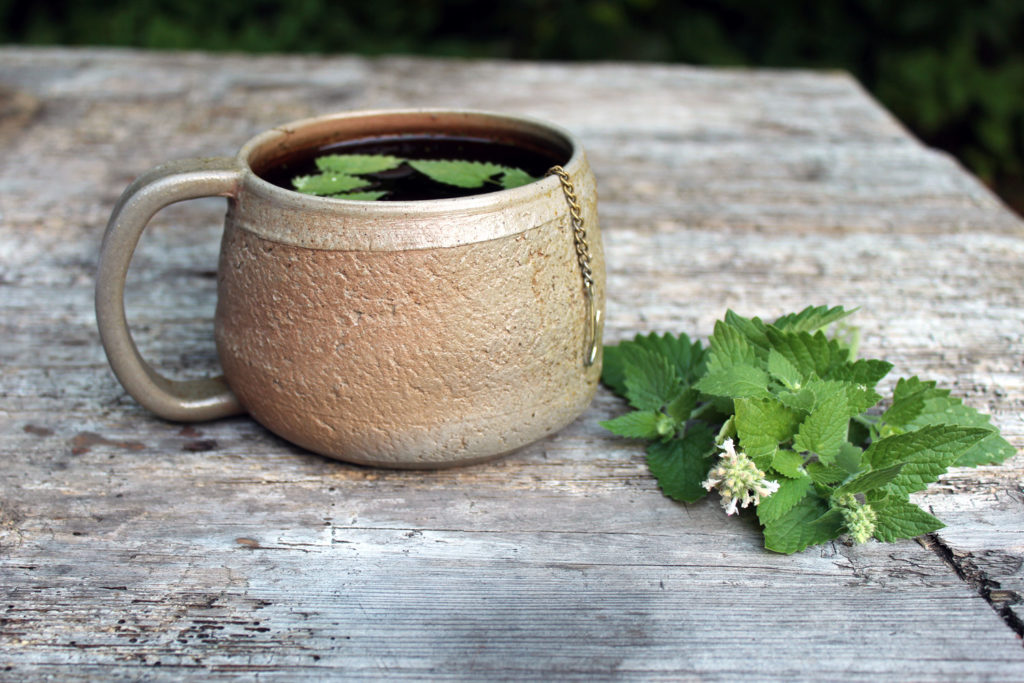You’ve probably heard of catnip (Nepeta cataria) which is loved by cats. During my research of (what I thought to be) an unknown mint variety that is growing in the edge of my garden since the beginning of time I found out that if was actually lemon catnip (Nepeta cataria ssp. citriodora) which is pretty common in Slovenian gardens and commonly mistaken for lemon balm. Unlike real catnip, her lemon sister doesn’t attract cats and has a pleasant citrus-minty smell. While catnip’s blossoms are purple-blue color, lemon catnip’s blossoms are white.

Lemon catnip is (similar to her sister catnip and all her mint cousins) an exquisite honey plant. One plant will feed multiple bees while in bloom. If we trim the plant after blooming, we’ll notice a temporary drop on bees’ population in the garden but will actually profit in the long run because trimming ensures blooming up to three times in one season. This way we will not only feed the bees but also increase pollination across the whole garden.
Sedative for people
Not a lot of people know of the benefits that lemon catnip bears. Its tea has a sedative effect, it calms gastrointestinal tract and increases sweating therefore can be used for lowering the fewer.

Harvest and use of lemon catnip
Fresh leaves are great in salads, dips, teas and as a garnish for summer drinks (it tastes perfect with iced elderflower syrup).
I cut my lemon catnip when I feel that the bees have picked most of the honey from the blossoms. I cut all the stalks, about 15cm above the ground. I dry whole stalks – together with the leaves and blossoms. When completely dry, I remove the leaves and use them for tea (the whole above-ground part of the plant is suitable for tea making: stalks, leaves and also blossoms). I cut the dried stalks, mix them with dried blossoms and put them in small fabric bags which I place between my clothes. Lemon catnip is known to be a moth repellant much the same as lavander.
Invasiveness and control
As is common to all the mints, their cousin lemon catnip can also be pretty aggressive in its growth. Left to spread uncontrolled can also become invasive. Along with vigorous root growth it can also propagate with seeds therefore it’s urgent that we trim the plant right after blooming.
Propagation
Lemon catnip is winter hardy perennial. It can be propagated with deviation of the main plant, with cuttings or from seed. It’s undemanding and easy to grow.
Short ID of Lemon Catnip:
Special growing demands: simple to start and grow, need maintenance. Without seeding prevention can be invasive. Honey-bearing.
Adult plant height: up to 70cm
Storing the lemon catnip: air-drying in dry, dark space
Why would you want to consume it? It relaxes the body, especially gastrointestinal tract. Increases sweating and helps to fight fever.
Conclusion: Great, bee-hosting garden accessory that also helps to pollinate the garden.

Pin in for later:


No Comments